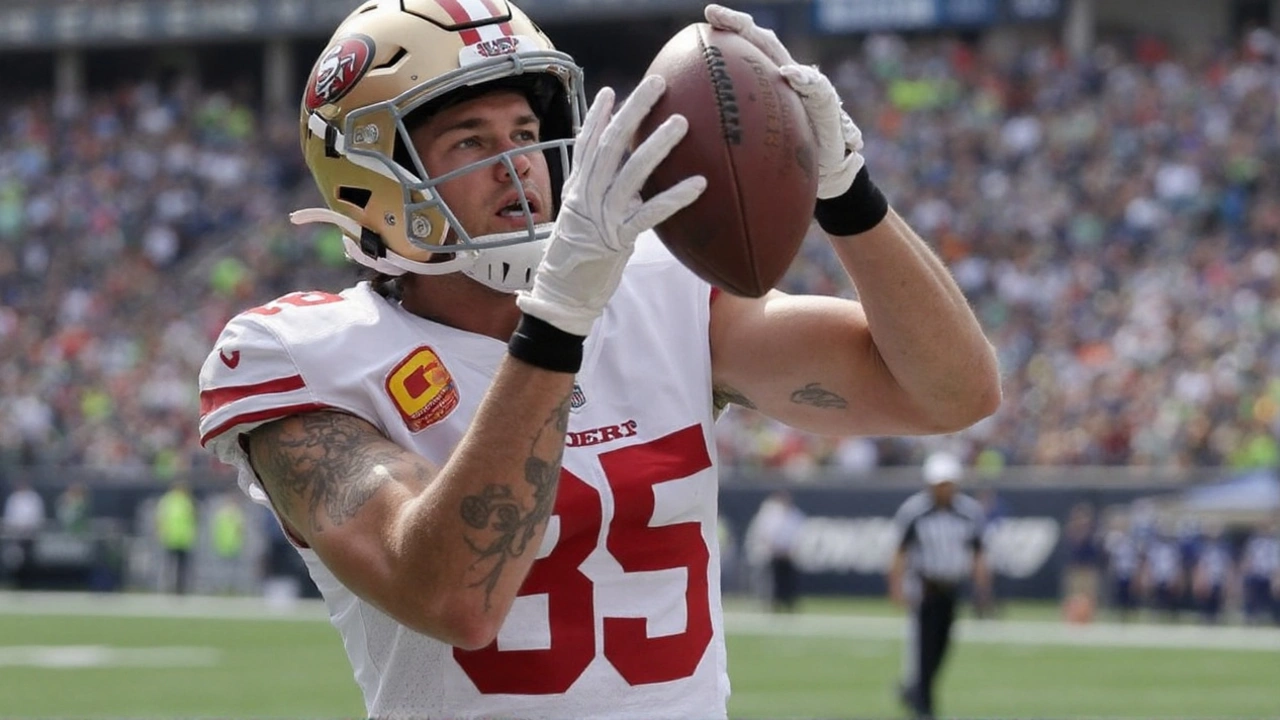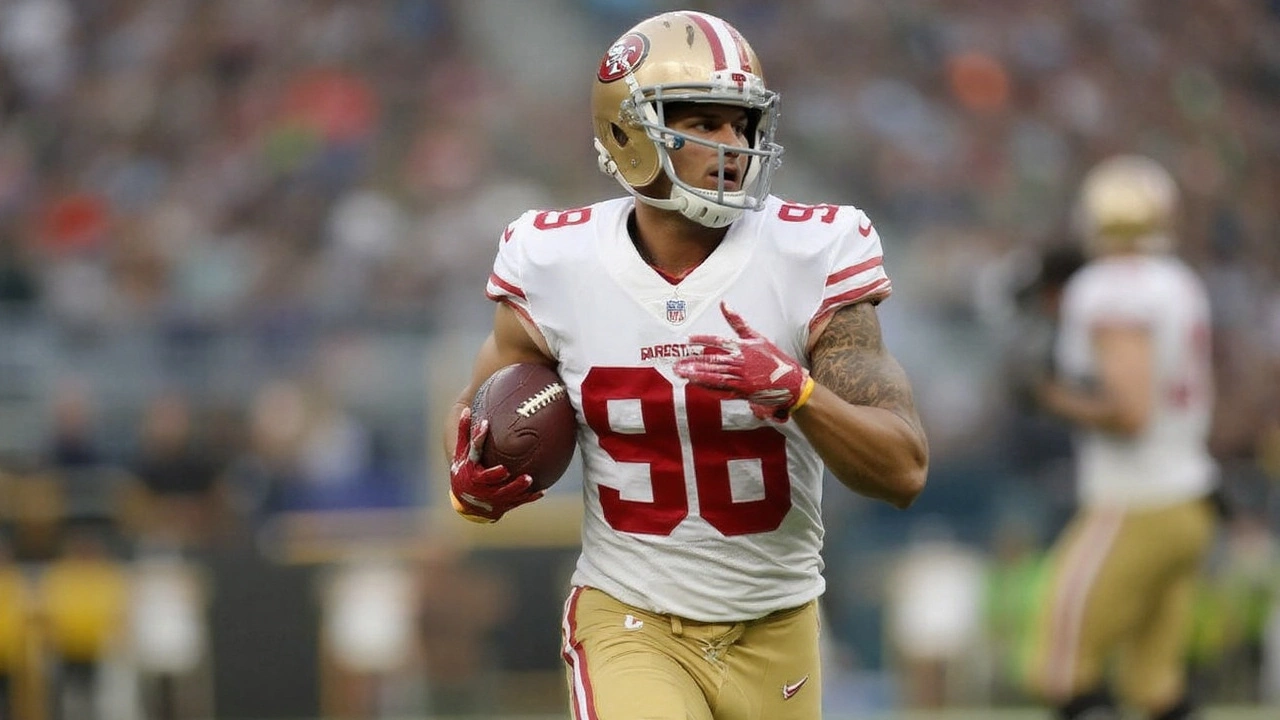49ers win the opener, but lose George Kittle to a hamstring
The 49ers walked out of Week 1 with a 17-13 win over a division rival, but the bigger story was on the sideline. Tight end George Kittle left in the second quarter with a hamstring injury and was ruled out before halftime. He’ll get an MRI on Monday to find out how bad it is — and whether San Francisco will be without one of its most important players to start the season. The George Kittle injury throws an early curveball at a team with Super Bowl ambitions.
The sequence turned fast. With 10:06 left in the second quarter, Kittle ran a route up the right sideline while Brock Purdy was getting sacked by Seahawks safety Julian Love. Moments later, cameras caught Kittle limping across the field toward the 49ers bench. He went straight into the blue medical tent, then reappeared in a baseball cap, helmet in hand. About two minutes before the half, the team ruled him out.
Broadcast replays raised another possibility: Kittle may have tweaked the hamstring a snap earlier on a second-and-22 run, when he was blocking downfield for Christian McCaffrey. Either way, the result was the same — San Francisco had to finish a tight game without its best tight end.
Before the injury, Kittle was part of the early spark. He logged four catches for 25 yards and scored San Francisco’s first touchdown of the year on a 5-yard grab, staking the 49ers to a 7-0 lead. That red-zone play was classic Kittle — quick release, strong hands, and a clean finish through contact.
Kittle’s exit pressed the depth chart into action. Jake Tonges, elevated into a bigger role, delivered three catches, including the go-ahead 4-yard touchdown with 1:34 to play. That score flipped the game and stood up as the winner. In a matchup that was tight all afternoon, those snaps from a backup tight end were gold.

How it happened, why it matters, and what’s next
Soft-tissue injuries are tricky, and the 31-year-old Kittle has been managing them. Last season, he missed two games — Weeks 3 and 11 — with hamstring issues, then still finished with 78 catches, 1,106 yards, and eight touchdowns. He’s a six-time Pro Bowler and two-time All-Pro for a reason. Even when he isn’t racking up yards, his blocking changes how the 49ers run the ball and protect the quarterback.
That’s the first big impact if he misses time: the run game. Kyle Shanahan’s offense leans on tight ends to seal edges and create angles for McCaffrey’s outside zone and cutbacks. Kittle is elite at that. Without him, you often need a second tight end or a receiver to help on the edge, which can tip your hand or force different calls. The screen game and play-action bootlegs also look different when defenses don’t have to account for Kittle slipping behind linebackers.
There’s also the red-zone piece. Kittle’s body control and strength on short routes are a safety valve for Purdy. Inside the 10, the 49ers love using motion to free Kittle on quick outs and crossers. Tonges’ late touchdown showed the concept still works, but losing Kittle means fewer matchups that tilt in San Francisco’s favor.
So what might the MRI tell the team on Monday? In general terms, a low-grade hamstring strain can mean a week-to-week plan with rest and rehab. A moderate strain can cost multiple weeks. The staff will look for swelling, fiber disruption, and any tendon involvement. The medical plan is usually conservative early in the year, because rushing a hamstring can lead to setbacks — and that’s the last thing San Francisco wants in September.
From a game-plan standpoint, expect tweaks if Kittle is sidelined. You could see more three-receiver sets to spread defenses and keep the ball moving on quick throws. Shanahan can lean into McCaffrey as a receiver, use motion to find easy touches for Deebo Samuel, and isolate Brandon Aiyuk on slants and digs. Purdy has shown comfort working through progressions; the goal would be to keep him ahead of the sticks and out of long third downs where a tight end mismatch usually helps.
Protection is the other lever. Kittle is often the hidden answer to edge pressure, chipping before releasing into routes. Without him, the 49ers may keep a back in to help or use condensed formations to shorten angles for tackles. It’s not as clean as having No. 85 do a little of everything, but it can hold together in spurts.
Sunday’s result also showed the roster’s resilience. Tonges stepped in and delivered. The wideouts absorbed extra targets. The defense kept the score close enough for a late offensive push. That’s how you survive an in-game injury in a division game.
Big picture, this is a balance between urgency and patience. It’s Week 1. The 49ers want Kittle healthy for the long run, not just next Sunday. If the MRI reads mild, the staff can build him back with limited practice work and a snap count. If it’s more significant, they’ll need stretches where the tight end room handles the basics while the stars carry the explosive plays elsewhere.
Kittle’s value is hard to overstate. Since arriving as a fifth-round pick in 2017, he’s stacked four 1,000-yard seasons and built a reputation as one of the most complete tight ends in football. He’s the tone-setter — the finishing block that springs a 20-yard run, the seam route that scares safeties, the third-and-6 catch that keeps a drive alive. The 49ers can scheme around his absence for a week or two. Sustaining it longer is the real test.
For now, the timeline hangs on Monday’s MRI. The team kept details tight after the game, offering no more than the plan for imaging. That’s standard. The next update will tell us whether this is a brief scare or an early-season hurdle that changes the 49ers’ September. Either way, San Francisco just got a reminder of how thin the margin is — even in a win.

Write a comment